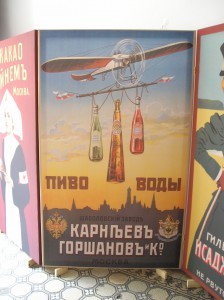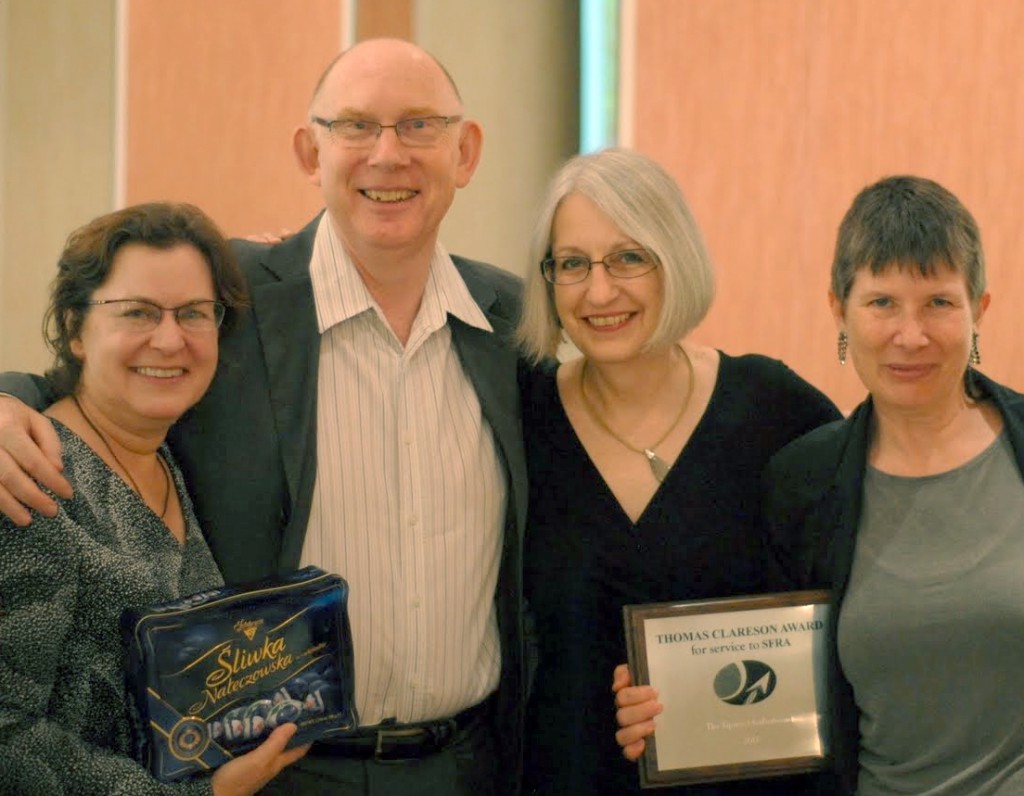As is so often the case, the truth lies in the gray areas between two extremes. Karen and I were given two boxes of Śliwka Nałęczowska w czekoladzie. One box made it back to the USA. Over the course of our remaining travels in Poland, the other box mysteriously and gradually became lighter and lighter — until we discovered it was empty.

How could such a thing happen? Alien abduction, perhaps. I have heard that aliens are fond of chocolate. It is also possible that Żubrówka was involved.
But again, I digress.
The next day, we boarded a bus for Krakow and had an uneventful journey. In Krakow, we descended into the depths of the earth and met the Devil. In that order, but not like it sounds.
Our descent was into the Wieliczka Salt Mine. Feeling that it was our duty as tourists to take at least one organized tour, we signed up for a tour of the salt mine, which some say inspired Tolkien’s descriptions of the mines of Moria. The mine is a Unesco World Heritage site, after all.
First, a few pertinent thoughts.
- We cannot pronounce Wieliczka. Can you?
- The mining of salt at Wieliczka began in the 13th century and continued for the next 700 years. Commercial mining stopped in 1996.
- The mine now functions as a tourist attraction. People come from all over to see the amazing underground chapel carved out of the salt by the miners. In the tunnels and chambers are great walls of salt, statues of gnomes and popes and saints, glittering salt chandeliers and the mandatory carving of the Last Supper. There is an underground post office that takes a very very long time to deliver a postcard. (My mother can attest to this.)
- The mine includes a labyrinth of tunnels, over 180 miles (300 km) of them, on nine different levels.
- There’s an underground lake in the mine and an underground sanatorium where chronic allergic diseases are treated. Rumor has it that the mine reaches a depth of 1072 feet (327 meters).
The official tour does not include the sanatorium. On the official tour, you must shuffle along in a tourist group, descending a wooden stairway of 378 steps and following a tour guide for about 3/4 of kilometer, staying with the group and never lingering behind to lick the damp gray walls to make sure they really are salt….not that anyone would ever do that.
What next? Make your choice:
Option 1: Pat and Karen dutifully stayed with the group, mailed letters from the underground post office, and returned to the surface unscathed.
Option 2: Despite having watched many horror movies in which it is fatal to leave the group, Pat and Karen snuck away in a dark tunnel, licked the walls (yes, they are salt), liberated the bored residents of the sanatorium, and went skinny-dipping in the underground lake. Eventually, the cops were called and the group was ejected. Karen and I talked our way out of trouble and eventually returned to our hotel dripping wet and leaving salt stains on the carpet.
Questions to consider:
Do you really think Karen and I, co-founders of the Tiptree Award, would stay with the group? Really? How much do you know about us? Have you read any of our books? Have you read any books that won the award?
Wouldn’t Karen and I have dried off while in police custody? Why would we still be wet when we got back to the hotel? Does considering this detail influence your choice? If so, why? If not, why not?
Do you really think we would lick the walls of the mine? Maybe I would, but Karen? I mean, she once belonged to the PTA. Think about it.




